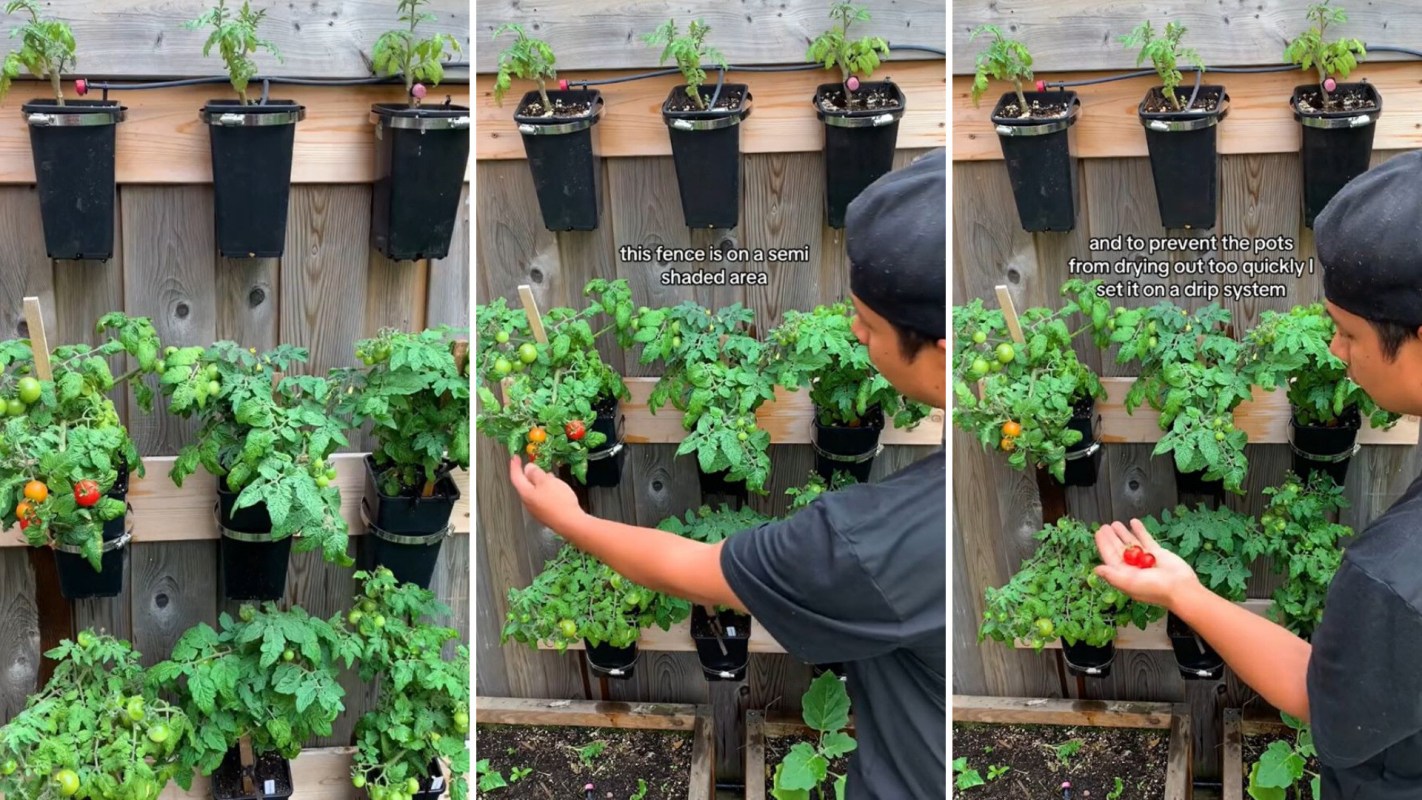A TikTok video briefly shows some of the biggest benefits of vertical farming.
The 18-second video is from Planted in the Garden (@plantedinthegarden), which has more than 469,000 followers and 3.9 million likes.
"It's also great for small spaces," the TikToker wrote.
The scoop
The video starts with a young man showing a wooden fence with some flower pots attached, one above the other.
"Here's a vertical garden idea to use an empty fence and start growing food," he begins.
The narrator explains how the fence is on a semi-shaded area where he grows micro dwarf red robin tomatoes.
To prevent the pots from drying out, he sets them up on a drip system, which we can see briefly as drops of water gently fall onto the plants.
@plantedinthegarden Vertical gardening is one way to utilize empty spaces and maximize food production. It's also great for small spaces. You can grow micro dwarf variety like Red Robin tomato. Keep in mind that if you place it in full sun, you'll need to water often. #gardenproject #gardening #growfood #gardenhack #gardentok ♬ original sound - Planted in the Garden
How it's helping
There is a long list of benefits to growing your food instead of buying it, among them the simple fact that it saves you money and a trip to the store.
Most store-bought produce is wrapped in plastic. Around 40 million tons of plastic are produced each year, but only about 5% gets recycled, so you're doing the environment quite a favor by producing your own food.
Vertical farming can be a great alternative for those who want higher productivity in a much smaller area.
The process can lead to shorter growing times and lower water use. And, of course, fresh produce can be grown much closer to where it's eaten.
Large-scale vertical farming is becoming increasingly popular, and with the right technology and methods, foods can be grown all year.
What everyone's saying
"This is really smart," one person said.
"I am going to attempt to copy this. Thank you," another wrote.
One commenter offered some additional advice by adding, "Instead of dripping onto the leaves use thin hoses which lead into the next pot."
Join our free newsletter for easy tips to save more, waste less, and help yourself while helping the planet.









